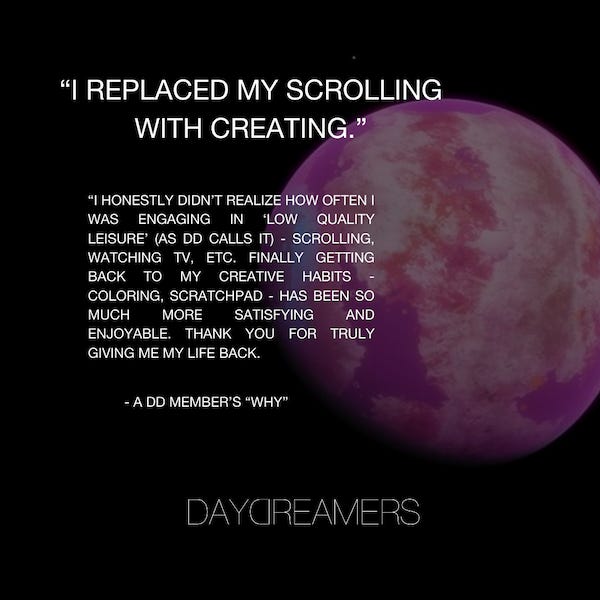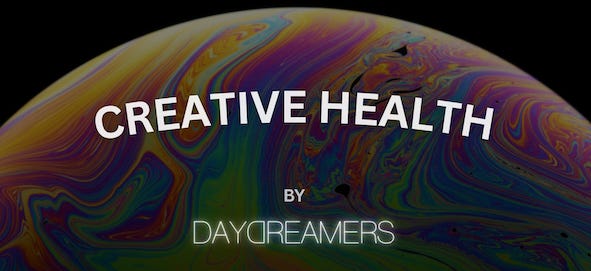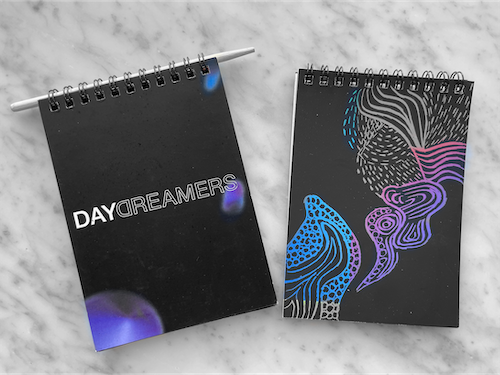Why We All Need To Make Stuff With Our Hands Again
The lost art of dexterity: Our brain was built for tactile creation - here's what we're losing without it.
Making things in the analog world has become somewhat of a lost “art.”
Okay yes, we still create in other ways: We edit a picture with a few clicks. We type. We post.
But, something deeper is happening beneath the surface of our frictionless lives - something most of us can feel, even if we can’t quite name it: We’ve stopped using our bodies to make almost…anything.
And, in doing so? It doesn’t just make us feel distracted or foggy. It quite literally cuts off our brain-body link that evolutionary biology spent millions of years building.
Think about it like this: Right now, we live in a world where most of our movements are small and mindless - we tap, swipe, scroll, and send. But, research shows that these repetitive, digital motions only exercise a fraction of our brain’s sensory, motor, and emotional pathways. And, that weakens the very systems we need to be creatively healthy; to stay grounded, flexible, and alive in an ever-changing world.
Essentially, we’ve forgotten that our body - not a screen or a keyboard - was our first creative tool. And, some scientists argue that it’s still our best.
Seriously, think about it: When was the last time you made something with your hands? The last time you blended pastels onto a page? Dug them into the dirt? Kneaded dough - slowly, repetitively - without washing for a quick scroll?
If it’s hard to remember - I’m with you. Even as someone who thinks about this daily (at Daydreamers, our whole mission is expanding the creative process beyond the screen), I can still go days without a single act of tactile, physical creation.
But, this past week, I baked a cake from scratch just for the heck of it (rare!) - and something within me shifted. It wasn’t just that my stress levels dropped (they did). Or that I felt more “creative” (I did).
It was that I felt fully here again - less like a brain floating in space…and more like a human being.
There’s a name for this in science: Embodied cognition, or the idea that we don’t just think with our heads, but with our whole bodies. That the very act of doing something with your body helps your mind come alive again.
And, in a world of screens, speed, and synthetic “creativity,” making things with your hands has become strangely radical.
So, let this week’s note be your invitation: We all need to have a create-with-your-hands summer - not to become better at art, but to remember that your body is the original creative instrument. It’s one of the fastest ways to come back to yourself when the world feels like too much.
Here’s why it matters - and how to start.
Hey there - Katina here. I’m a Creative Health Scientist, and the Co-founder & Chief Science Officer of Daydreamers. Every week, I explore the science of Creative Health - or how we can all live the most meaningful, beautiful, and creative lives.
If you're new here: Welcome. I'm so glad you found us. And if you’ve been reading for a while - thank you. I’m so grateful you’re building a creatively healthy world with us.
Double Click: Why Your Creative Brain Also Needs A Body 👯♂️
Most of us often think of creativity as mental process - a jolt of inspiration or a late-night brainstorm session.
I’m guilty of pushing this narrative, too. Just a few weeks ago we talked about creativity as a brain-based activity. And, even when we do talk about creativity as a sensory-driven practice or as a tool to end the stress cycle, the body seems like an afterthought.
But, I want to flip this idea on it’s head.
Because, our bodies - and our hands in particular - aren’t just a creative health tool. They’re a central component of the process.
At our core, we humans are tactile beings. Our earliest understanding of the world happened through touch. Just think of how babies everything in their mouth - squeezing toys, feeling textures - to make sense of their environment.
That’s the essence of embodied cognition: The scientific theory that our bodies don’t just carry out thoughts; they help shape them. Movement, sensation and physical presence actually influence how we process ideas, form emotions and come up with creative insights. Wild, right?
But interestingly, not all forms of touch are created equal.
In theory - we still move through our world with touch today; tapping our phones, pounding on the keyboard and snapping pictures (maybe in a few years when we live in the Metaverse we won’t even do that 👀🫠).
But, these are considered simple movements - and they have way less of a positive impact on our brain.
So much so, that it’s actually starting to worry scientists. Recent brain imaging and EEG studies show that complex hand movements - like sketching, sculpting or handwriting - light up far more neural real estate than typing or swiping ever will.
And, when we stop using that capacity? We also lose cognitive depth.
This problem is way bigger than dropping a few creative muscles over time. Neglecting the mind-body link creates a literal structural loss in the brain. Without hand and body movement, we weaken the neural pathways tied to spatial awareness, bilateral coordination, and neuroplasticity - all essential components of living a long, healthy, good life.
I love the way Dr. Kelly Lambert, a neuroscientist at the University of Richmond puts it: Physical, effort-based actions like gardening or knitting act like “behaviorceuticals” - drug-free treatments that regulate the brain and even buffer against depression.
And when we stop taking them? We have trouble accessing the parts of our brain that help us feel motivation, clarity and control.
In other words: By forgetting how important it is to create in the analog world, we’re literally letting parts of our brain disconnect, too - the parts built to imagine, innovate, and grow.

It’s Time To Express Ourselves In The Analog Again
From my point of view as a Creative Health Scientist, complex hand movement in the real world, is the future of healing - for ourselves and our world writ large.
On the most basic level, as digital content explodes, we’re starting to see something interesting: The real world has a premium. People are craving it - just look at how popular everything from concerts to cooking classes are. But what about our personal creativity? What about the parts of you that don’t live online?
That question has always been at the center of our work at Daydreamers. Our core believe is that: Exercising our creativity in the analog world is the epitome of Creative Health - and one of the most overlooked ways to strengthen your mental health, sense of agency, and capacity to flourish.
The research backs it up. Creating something tangible with your hands has been shown - even in our own studies - to increase self-esteem, autonomy, and something psychologists call environmental mastery, or the belief that you can shape your surroundings and influence your life.
These aren’t fluffy outcomes. They’re the foundations of a psychologically rich life.
And when we strengthen them, it changes how we show up in every area with more confidence, more curiosity, and yes, more creativity.
And even more - the repetitive, tactile nature of analog creativity? It’s not fluff. It’s biological regulation. It’s truly how we shift from burnout into rhythm. From autopilot mode into agency.
In one of my favorite studies, just 45 minutes of hands-on art-making significantly dropped cortisol levels (literally, they measured them!) and strengthened reward circuits in the brain - regardless of the person’s skill level or artistic talent.
Let that sink in: It’s not the outcome that heals. It’s the making itself.
That’s exactly why Daydreamers is built around physical tools - not just digital content. Because it’s never been about becoming “better at art.” It’s about reclaiming the parts of ourselves that get numbed out in a hyper-efficient, screen-based world.
If any of this intrigues you - come join us at DD! We dive into the science behind physical, creative expression a ton on our platform - and then give you the tools to actually practice it in real life.
But, no matter what, take this as a reminder that in a time that’s trying to pull us into faster, more optimized ways of existing - it’s an act of Creative Health to come back to the body. To slow down.
And, to remember that some of our most powerful ideas… start at our fingertips 🤓
- Katina
Daydreamers’ Co-Founder and Chief Science Officer
Express Yourself In The Analog World with Daydreamers 🛸
At Daydreamers, we believe your body is your most powerful creative tool - and it’s time we started using it again.
We’re the first platform to treat creativity like a workout for your well-being. Backed by science, designed for everyday life, and powered by tactile, analog tools that help you express yourself off-screen.
Our Creative Health Journeys are built to target the biggest blockers to creative freedom today: Perfectionism, Autopilot, Conformity. Each one combines research-backed practices, real-world exercises, and physical creative kits, so you can reconnect with your imagination in the way your brain was built for: through doing.
Come join the Daydreamers crew! Your creative brain (and body) will thank you 🧠
Your Creative Health Protocol 🧠
This newsletter gives you the why behind strengthening your Creative Health. Daydreamers gives you the tools to try it out in real life - here’s a taste.
Take a Behaviorceutical 🤓
Takeaway: Hands-on creative movement isn’t just soothing - it’s biologically necessary. Studies show that complex, tactile activities like drawing, kneading, painting, and building activate the "effort-driven rewards circuit." This lights up areas of the brain tied to motivation, emotional regulation, and long-term well-being, especially when the activity is meaningful and physical.
Action: Pick one analog activity this week - something you make with your hands - and spend at least 20 minutes doing it with no pressure to produce anything “good.” Paint something messy. Bake from memory. Sculpt with clay or tear up old magazines for a collage. It’s not just about reducing stress or having fun - it’s about getting back in touch with our most ancient creative tool: Our bodies.
Expand Your Creative Brain 🪐
Exposure to new ideas is an essential part of Creative Health. So, here’s what we’ve been enjoying, digesting, exploring and expanding - instead of doomscrolling and going down the (wrong) kind of rabbit holes.
📖 Read: Research Paper - What makes someone cool? A new study in the Journal of Experimental Psychology last week explores the 6 traits that make someone “cool” - and they very much align with POV Creative Health. Watch Katina’s take here and here.
💭 Ponder: Is posting becoming…lame? Speaking of the turn from digital to physical creation - maybe we’re reaching an end point of point of casual social posting? Kyle Chayka is one of our favorite culture writers and this take is spot on.
🌸 Try: Ikebana (Japanese Flower Arranging). This is one of the most beautiful, mindful, creative practices I’ve tried in a while.Dupi and I tried it following this vintage book we found on eBay and had the best time - you’ll never look at TJoes flowers the same again.
Let’s talk in the comments: When was the last time you made something with your hands just for the sake of it? What did it feel like?
As always, thank you for thinking with me - and our crew at DD HQ - this week. If this post sparked anything for you, please consider liking, commenting or sharing it with someone who needs it. It’s our mission to help as many people as we can - and every form of engagement helps. Your voice is an act of creativity - and we appreciate every single one 🤎🧠🪐




This article explains so much about what I've been doing by listening to my mind and body and following my intuition! Over the past several months I've been having kind of an aversion towards keeping a smartphone and laptop with me-- I even got a flip phone (it's Barbie themed, fun fact :)) to help me stay off of my smart phone and even deactivated my social media accounts recently. I've been gravitating more towards nature and being outside and reading physical books and writing physically over typing-- though I still need to keep the latter an option when I write longer things to save time. I especially am craving community with people where we are being creative together off of our screens; virtual activities, even if it's done in groups, and meetings are just not the same as in person ones. The concept of embodied cognition helps me understand so much about the journey I've been on-- I hope more people see this article and learn about how important it is. Soooo glad I recieved this in my inbox & love learning from Daydreamers as always.